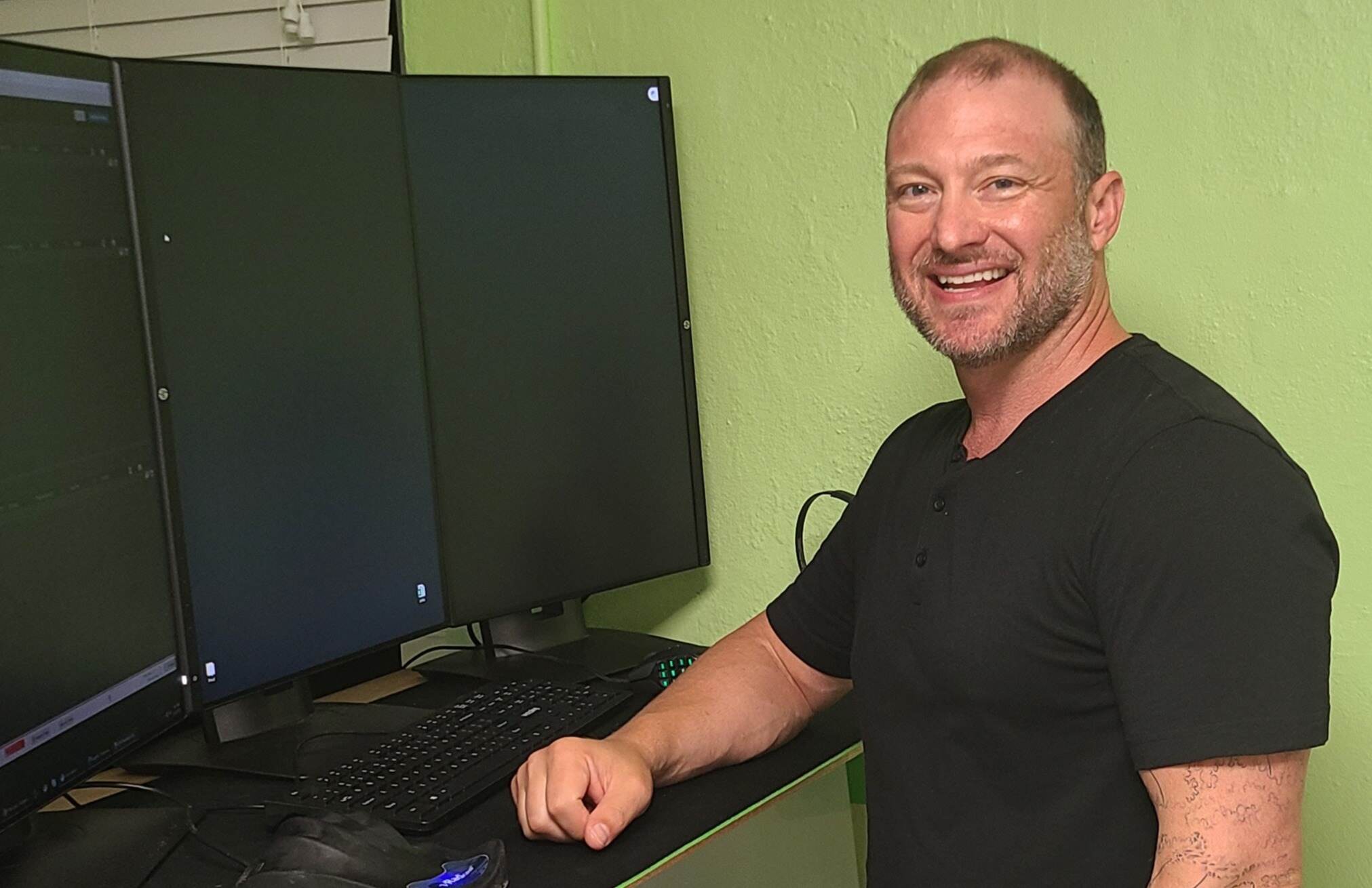10 Reasons I’m a vRad Lifer
Originally published by Michael Walter on Radiology Business Looking back on my career as a radiologist—now in its 22nd year and...

Remote radiologist jobs with flexible schedules, equitable pay, and the most advanced reading platform. Discover teleradiology at vRad.

Radiologist well-being matters. Explore how vRad takes action to prevent burnout with expert-led, confidential support through our partnership with VITAL WorkLife. Helping radiologists thrive.

Visit the vRad Blog for radiologist experiences at vRad, career resources, and more.

vRad provides radiology residents and fellows free radiology education resources for ABR boards, noon lectures, and CME.

Teleradiology services leader since 2001. See how vRad AI is helping deliver faster, higher-quality care for 50,000+ critical patients each year.

Subspecialist care for the women in your community. 48-hour screenings. 1-hour diagnostics. Comprehensive compliance and inspection support.

vRad’s stroke protocol auto-assigns stroke cases to the top of all available radiologists’ worklists, with requirements to be read next.

vRad’s unique teleradiology workflow for trauma studies delivers consistently fast turnaround times—even during periods of high volume.

vRad’s Operations Center is the central hub that ensures imaging studies and communications are handled efficiently and swiftly.

vRad is delivering faster radiology turnaround times for 40,000+ critical patients annually, using four unique strategies, including AI.
.jpg?width=1024&height=576&name=vRad-High-Quality-Patient-Care-1024x576%20(1).jpg)
vRad is developing and using AI to improve radiology quality assurance and reduce medical malpractice risk.

Now you can power your practice with the same fully integrated technology and support ecosystem we use. The vRad Platform.

Since developing and launching our first model in 2015, vRad has been at the forefront of AI in radiology.

Since 2010, vRad Radiology Education has provided high-quality radiology CME. Open to all radiologists, these 15-minute online modules are a convenient way to stay up to date on practical radiology topics.

Join vRad’s annual spring CME conference featuring top speakers and practical radiology topics.

vRad provides radiology residents and fellows free radiology education resources for ABR boards, noon lectures, and CME.

Academically oriented radiologists love practicing at vRad too. Check out the research published by vRad radiologists and team members.

Learn how vRad revolutionized radiology and has been at the forefront of innovation since 2001.

%20(2).jpg?width=1008&height=755&name=Copy%20of%20Mega%20Nav%20Images%202025%20(1008%20x%20755%20px)%20(2).jpg)

Visit the vRad blog for radiologist experiences at vRad, career resources, and more.


Explore our practice’s reading platform, breast imaging program, AI, and more. Plus, hear from vRad radiologists about what it’s like to practice at vRad.

Ready to be part of something meaningful? Explore team member careers at vRad.
4 min read
 Jonathon Lee, MD
:
June 19, 2022
Jonathon Lee, MD
:
June 19, 2022
.png)
When you’re a radiologist, your work isn’t just what you do—it’s who you are.
The career is all-consuming; if you follow a traditional path in private practice, you simply have to come to terms with the fact that you’ll devote your life to it—and for nine years, I did.
But when I found myself approaching 40 and already feeling burned out—and Googling around to see whether maybe I could become a history teacher instead of a radiologist—I began to wonder why there weren’t options where I could put my hard-earned skills as a radiologist to use without being exhausted all the time or counting down the days to retirement.
I didn’t want to leave radiology completely, but I did want to turn the dial down a little bit. And I wanted to do it soon. After talking with friends who felt the same way, I came across a promising option: teleradiology. While I had previously thought that remote reading was only for rads who were already in or near retirement, I learned that it also could be a path to a full and successful career, minus the burnout.
Seeking a better option was the beginning of a journey that led me to where I am today: reading remotely with vRad six hours a day, 7-on-7-off, and pursue hobbies—hobbies!—in my free time. Even more, this fall, at age 45, I am scheduled to further reduce my work week from 42 to 34 hours.
Five years into teleradiology, I encourage all radiologists—even those just beginning their careers—to think about where and how they practice. Stop and ask yourself whether your current position is sustainable enough to take you right into retirement.
If it’s not, take a look at these tips to redefine the way you think about retirement and seek out a realistic path that will get you there:
 Break out of the binary.
Break out of the binary.Don’t fall into the trap that you can either have an all-consuming career or nothing; always remember that there is a middle ground. Balance, we all need and we can all find it. With that in mind, try to stop thinking about your career as having two phases: first you work yourself to the bone, and then you retire. Instead of that “all or nothing” approach, find your own dial.
There will inevitably be times in your life where you can devote yourself to work. But there also will be times when you’d rather pursue a hobby or see your child’s soccer games than get a bigger paycheck. Find a position that lets you step back and step into life, without stepping out.
It’s hard to keep from comparing yourself to your colleagues and former classmates. Sometimes, though, we make the mistake of equating how miserable we are with how successful we are, wearing our exhaustion as a badge of pride that demonstrates our importance.
I’m so glad that the stigma surrounding teleradiology has been shattered as we experience a collective reckoning about the importance of work-life balance. There’s more to life than work, and the only person you need to answer to is yourself.
Everyone defines flexibility differently. For me, it means working from home so that I can avoid the exhausting day-to-day commute. It’s also the ability to take care of a sick kid when I need to, and the free time to pursue other interests on the side.
The free time I’ve had in the five years since I moved from private practice to vRad has been so invigorating. I’ve renewed my interest in old coins and became a certified numismatic scholar. I’m in the process of becoming a certified retirement coach, and I’m a fully engaged husband and father.
Figure out what flexibility looks like to you and find an employer that’s willing to work with you to give you those options.

To me, even more than the crazy hours, the unpredictable schedules that ruin plans are one the most difficult aspects of working in
medicine. I can still remember trying to make a dentist appointment and realizing that I had no idea what my schedule would be on a specific date six months away.
If you can’t remember the last time you’ve been able to schedule something in advance, and know without a doubt that you’d actually be able to make it, it might be time to seek a different path.
With vRad, I have a say in my schedule, and it’s built into my contract. So I know exactly when I’ll be at work and when I’ll be available. Of course, if something comes up, as things tend to, they also are incredibly helpful in adjusting my shift or allowing for time off when needed outside of my scheduled days off.
Today, being a radiologist at a traditional practice involves a whole lot more than reading. From administrative responsibilities to office politics, many radiologists find that the higher up they climb, the less time they actually get to spend reading imaging studies.
Sometimes burnout is less about how many hours you spend at work, and more about what you do during those hours. If you’re doing what you enjoy—reading images that you know will have an impact on patients’ lives—the time will go by more quickly.
The way I see it, one of the benefits of reading remotely is that I’m shielded from so many of the outside tasks. That allows me to fully devote myself to providing good reads.
It’s never too early or too late to make a change, and there’s no hard-and-fast rule that you need to make a certain career move at a certain age. Most of all, remember that getting to retirement is a marathon, not a sprint. If you push too hard while you’re in the middle of the race, you’ll never be able to cross the finish line. I’m so glad that I slowed down when I did.
So five years in and about to be an empty nester, I’m looking forward to what’s next.
I’ve stopped thinking about a radiology career as having an “on/off” switch, where you work so hard that you’re missing out on the rest of your life and then suddenly stop working as soon as you reach a certain birthday. Instead, I really do think of it as a dial: I can dial down a little bit over the years as I need to, while still enjoying fulfilling radiology work—as well as a rich life outside of it.
Will I ever turn the dial down to zero and fully retire? Honestly, I’m not sure. I really enjoy my current setup, and I can see myself doing this for a long time. But I do know this: whether I’m working six hours, four hours, or zero hours a day, I’m glad to be living a life where I define myself by who I am—not what I do.
I love talking to radiologists who are looking to plan a sustainable path to retirement and avoid burning out before they get there. If you want to speak to me about a potential career at vRad, get in touch with a recruiter and ask them to put us in contact.
Read more from Jonathon Lee, MD:
Back to Blog
.png)
Originally published by Michael Walter on Radiology Business Looking back on my career as a radiologist—now in its 22nd year and...
.png)
I’ll be honest, I had no plans to go into teleradiology straight from residency. However, I fell into it because economic conditions meant choices...
.png)
For 20 years, my radiology practice was a large part of my life and my identity.I was a solo practitioner at a small community hospital in Kansas....
vRad (Virtual Radiologic) is a national radiology practice combining clinical excellence with cutting-edge technology development. Each year, we bring exceptional radiology care to millions of patients and empower healthcare providers with technology-driven solutions.
Non-Clinical Inquiries (Total Free):
800.737.0610
Outside U.S.:
011.1.952.595.1111
3600 Minnesota Drive, Suite 800
Edina, MN 55435